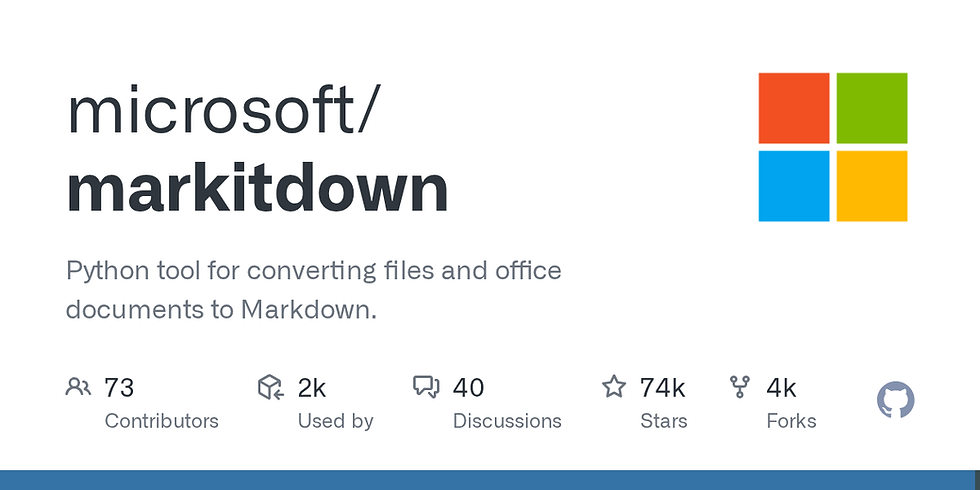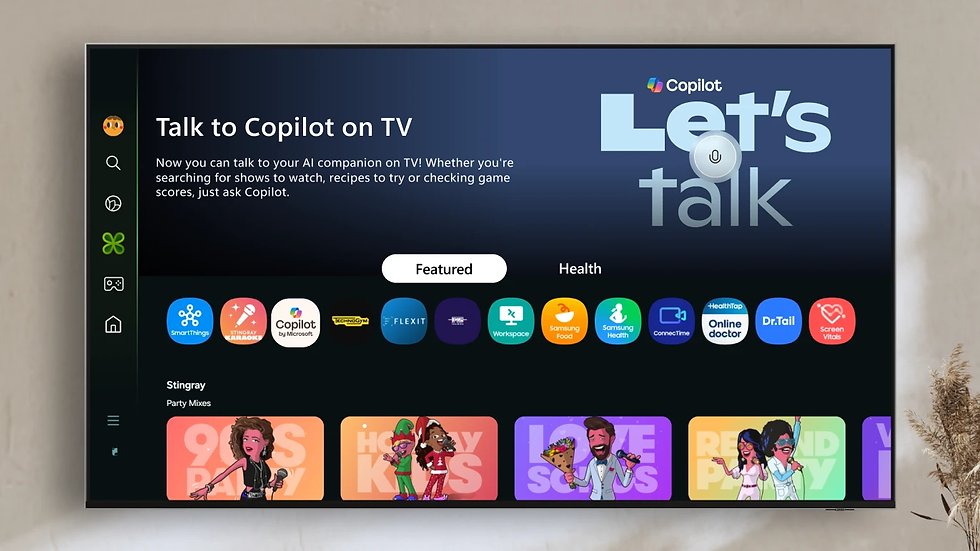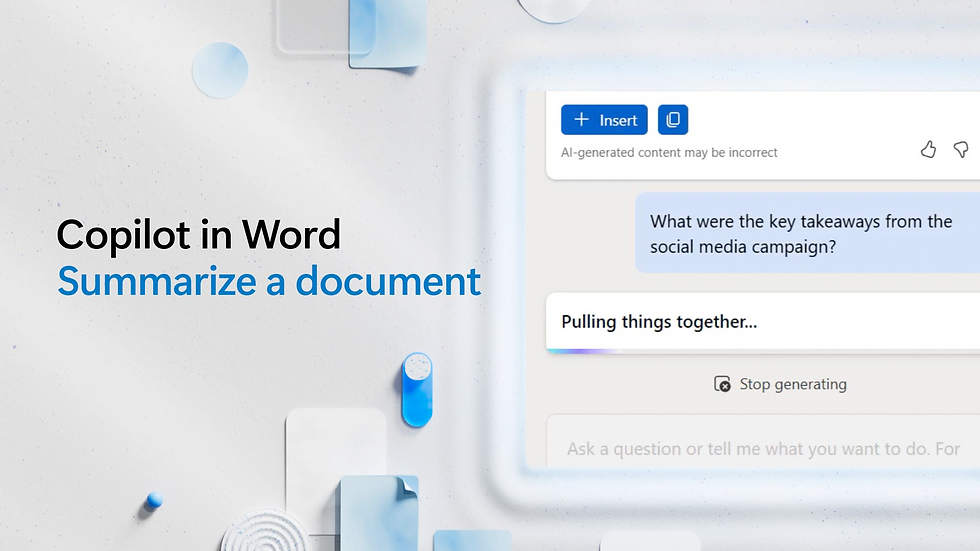Office Users Get Free AI-Powered Copilot Chat in Microsoft 365 Apps — What’s Included vs Paid Version
- Olivia Johnson

- Sep 16
- 10 min read

Why Microsoft’s Copilot Chat update matters for Office users
Microsoft announced Copilot is now included in Microsoft 365 Personal and Family, a shift that quietly changes what many people expect from their Office subscriptions. What was previously framed as a business-grade add-on — a powerful conversational assistant tied to enterprise licenses — is now rolling into consumer Microsoft 365 plans, bringing a chat-based Copilot inside Word, Excel, PowerPoint and Outlook for everyday users.
What Copilot Chat brings to Microsoft 365 apps

Conversational, contextual help inside Office apps
For everyday Office users, the headline is simple: you can now open a chat-style assistant inside Word, Excel, PowerPoint and Outlook that understands the document or file you have open and can act on it. That includes requests like “summarize this report,” “draft a reply that preserves tone,” or “highlight the three numbers in this sheet that moved the most last quarter.” Microsoft’s announcement describes Copilot Chat being available inside consumer 365 apps, with integrated chat panels that surface context drawn from recent activity and open documents.
What this means in practice:
In Word you can ask for a first draft, a rewrite in a different tone, or a concise summary that becomes the basis for an email.
In Excel Copilot parses data ranges and can propose charts, write formulas or call out anomalies.
In PowerPoint it can generate slide outlines, coach the speaker notes, and suggest visual layouts.
In Outlook it summarizes long threads, drafts replies, and extracts action items.
Key takeaway: Copilot Chat in consumer Microsoft 365 ties the assistant to your active document context, making outputs far more relevant than general-purpose chatbots.
What paid Copilot tiers add for power users
Paid Copilot (often labeled Copilot Pro or enterprise Copilot tiers) layers in capabilities aimed at heavier or more demanding users. The difference isn’t only in raw model power — it’s about scale and specialized features. Reported deltas include larger context windows, higher or prioritized usage caps, access to advanced connectors (workspaces that let Copilot reach across more data sources), and creator-focused capabilities like advanced prompt templates or production-ready content workflows. Coverage and comparisons of these differences appear in testing and reporting such as Windows Central’s feature breakdowns of free versus paid Copilot offerings.
Specifically, paid tiers typically offer:
Priority processing and reduced latency during high demand.
Expanded connectors to services or enterprise systems that the free consumer tier does not expose.
Higher monthly usage or token limits for heavy drafting and data-intensive requests.
Advanced prompt tooling and workspace features for creators and analysts.
Responsible AI and safety features included across tiers
Across consumer and paid tiers, Microsoft emphasizes safety guardrails: content filters, transparency notes explaining how outputs were generated, and administrative controls for tenant owners. These protections include mechanisms to reduce harmful or disallowed content and logs that support auditing. Microsoft’s responsible AI materials outline the company’s approach to building trust into Copilot deployments and apply to consumer and business contexts alike, helping ensure consistent handling of sensitive content across accounts (Microsoft’s responsible AI overview for Copilot).
Key takeaway: Both included and paid Copilot variants include core safety tooling, but organizations with compliance needs will rely on admin-grade controls and reporting only available at higher management levels.
Technical integration, performance expectations, and real-world impact

How Copilot uses context and telemetry
Copilot is designed to use multiple Microsoft 365 signals to produce context-aware responses: the open document contents, recent activity, calendar entries and other signals that help the assistant understand user intent. For administrators and IT teams, Microsoft exposes telemetry and reporting so adoption, usage volumes and potential content safety incidents can be tracked. The Copilot admin reports documentation explains the reporting surfaces available to tenant admins, including metrics for active use and types of interactions.
These telemetry features serve several purposes: tracking adoption, measuring impact, and surfacing usage patterns that may require governance.
Insight: Context-aware answers rely on short-term document state and longer-term Microsoft 365 signals — the more relevant context available, the better the assistant’s suggestions.
Performance differences between consumer and paid tiers
Performance is not purely about model speed; it’s also about how much context Copilot can consider and how quickly requests are prioritized. Paid Copilot tiers often receive priority processing under load, which results in shorter wait times during peak periods and more consistent throughput. Consumer integrations aim for acceptable response times for drafting and summarization, but heavy or complex requests (large spreadsheets, multi-file summaries) may be throttled or limited in the free tier.
Typical expectations:
Quick drafts and summaries in the consumer tier will often return in seconds, while complex, multi-document synthesis may take longer or be subject to usage limits.
Paid tiers advertise higher usage caps and faster responses under load thanks to priority queuing.
Richer context-aware answers that combine multiple files or extensive historical signals are more likely to be available to paid subscribers or via enterprise connectors.
Real-world examples and measurable organizational impact
Concrete customer stories show how Copilot can shift workflows. For example, PA Consulting reported that integrating Copilot with Dynamics 365 helped streamline sales and professional services workflows, producing measurable time savings and improved client responsiveness. Enterprises can quantify impact using tools such as Viva impact templates, which offer frameworks for tracking adoption metrics and business outcomes.
Academic and industry research into user perceptions — including recent qualitative studies — shows users value the time saved drafting and summarizing, but also surface concerns about accuracy, the quality of prompts, and user interface refinements (recent qualitative research on user perceptions). These studies remind product teams and developers to plan for training, governance, and iterative feedback loops when deploying Copilot at scale.
Key takeaway: Measured benefits are real but variable; enterprises should combine admin reporting with targeted pilot programs to quantify time saved and productivity gains.
Eligibility, rollout timeline, and pricing for Microsoft 365 Copilot Chat
Who’s eligible and how the rollout works
As of Microsoft’s January 16, 2025 announcement, Copilot Chat is included in Microsoft 365 Personal and Family. That means individual consumers with active Personal or Family subscriptions should see Copilot Chat appear inside their Office apps as Microsoft completes a phased rollout. Enterprise tenants remain governed by their subscriptions and admin policies; admins retain the ability to enable or restrict Copilot features at the tenant or user-group level.
Distribution will be phased: Microsoft often staggers features by region, platform (desktop, web, mobile), and by account type to manage load and gather feedback. Consequently, some users may receive access immediately while others see it after a short delay.
Pricing and when to consider paid Copilot
For Personal and Family subscribers the inclusion removes the need for a separate Copilot add-on for many common tasks. Paid Copilot tiers — Copilot Pro or enterprise Copilot packages — remain available and are targeted at users with heavier usage patterns, regulatory or compliance requirements, or advanced integration needs. Coverage from Windows Central illustrates what kinds of premium features might justify an upgrade.
When to consider upgrading:
You regularly hit usage limits in the included tier.
You need priority processing (faster responses under heavy load).
Your workflows require advanced connectors or enterprise data sources.
Your compliance profile demands tenant-level governance and audit-grade logs beyond the consumer controls.
Microsoft has historically adjusted pricing and promotions as features evolve, so organizations should watch for introductory offers or bundling changes that can alter value propositions.
Regional availability and platform considerations
Microsoft’s rollouts can vary by geography and platform. The user experience may also differ slightly depending on whether you use the Office desktop apps, the web versions, or mobile clients. Microsoft’s phased approach means that some features or deeper integrations may show up first on web or desktop before fully landing on mobile.
Insight: If you don’t see Copilot Chat immediately, check your subscription, app updates, and Microsoft 365 service health — phased rollouts and app updates are the most common reasons for apparent delays.
Copilot Chat free versus paid: direct comparison and alternatives

Feature-by-feature differences in plain terms
Below is a narrative comparison of the kinds of differences you can expect between the included consumer Copilot Chat and paid Copilot tiers:
Context window and file handling: Paid plans typically allow Copilot to ingest more content at once (a larger "context window") and may support cross-file synthesis using connectors. Free consumer Copilot focuses on the active document and recent activity.
Usage caps and priority: Consumer Copilot has reasonable monthly or daily usage limits to prevent abuse and manage capacity; paid tiers increase those caps and add priority processing.
Connectors and enterprise data access: Paid tiers enable connections to enterprise systems and third-party services that a consumer inclusion won’t surface for privacy and governance reasons.
Advanced tooling and creator features: Power users can access richer prompt templates, automation workflows, and integration into professional pipelines with paid Copilot.
Admin and compliance: Enterprises subscribing to paid Copilot get finer-grained admin controls and compliance features.
For a succinct breakdown of specific feature deltas and pricing, see reported comparisons such as Windows Central’s coverage, which tracks the feature lists and price points across tiers.
How this compares to the older enterprise-only model
Previously, Copilot was positioned primarily as an enterprise add-on or a separate paid product. Including Copilot Chat in Personal and Family accounts makes many day-to-day assistant tasks effectively standard for consumers, while enterprises still retain the ability to purchase broader capabilities as needed. The strategy mirrors other platform moves where baseline AI capabilities become ubiquitous, and premium tiers focus on scale, governance and advanced integrations.
Alternatives and competitive context
Users evaluating Copilot should consider how its tight integration with Microsoft 365 — being “inside” Word, Excel and Outlook — stacks up against third-party AI assistants. The advantage of Copilot is contextual awareness of your files and native integration, which reduces friction when acting on content. Competing assistants may offer different model choices or broader web access, but they typically won’t match the out-of-the-box, document-aware behavior that Copilot provides inside Office apps.
Key takeaway: For most consumers, built-in Copilot Chat will deliver high-value everyday assistance. Upgrades are best judged on needed capacity, integration depth, and compliance controls.
Real-world usage and developer and enterprise impact
Case evidence of workflow improvements
PA Consulting’s Microsoft customer story shows practical gains when Copilot is paired with Dynamics 365: faster deal workflows, improved CRM data quality, and productivity gains in sales and service operations (PA Consulting customer story). These case studies often report time savings on repetitive tasks, faster responses to customers, and more consistent output quality.
Enterprises tracking adoption can use templates to quantify impact. Viva/impact templates provide measurement frameworks for capturing KPIs such as time saved, changes in meeting or email load, and productivity gains across teams.
What user research says about experience and trade-offs
Qualitative research finds users appreciate Copilot’s ability to reduce mundane work — quick drafts, summaries and data calls are repeatedly cited as high-value outcomes — but researchers also note gaps: accuracy with complex or domain-specific facts, occasional hallucinations, and the need for better prompt controls or UX for refining outputs (user perceptions study and findings). Those observations matter to product teams and developers planning rollouts: training and clear escalation paths are essential.
Developer and admin implications
For developers and IT teams, enabling Copilot isn’t purely technical; it requires governance planning. Admins should:
Use Copilot admin reports to monitor usage and safety incidents.
Establish training materials so users understand strengths and limits.
Configure tenant-level policies for data connectors and content handling.
Developers building integrations or custom connectors should plan for incremental deployment and co-designed feedback loops with business users to tune prompts and guardrails.
Insight: Large-scale Copilot deployments are as much organizational change programs as they are technical rollouts; the best results come when leaders measure, iterate, and train.
FAQ — common questions about Copilot Chat free versus paid

Q1: Is Copilot Chat now free for all Microsoft 365 Office users?
Short answer: Copilot Chat is included for Microsoft 365 Personal and Family subscribers per Microsoft’s Jan 16, 2025 announcement; enterprise licensing and admin controls remain governed by separate subscription and tenant settings.
Q2: What features are missing from the free Copilot Chat compared to paid Copilot Pro?
Short answer: Paid tiers typically add higher usage limits, priority processing, expanded context and connector support, and advanced productivity tools; see reported differences in Windows Central’s comparison.
Q3: Do I need special hardware or apps to use Copilot Chat in Microsoft 365?
Short answer: No special hardware is required; you need an eligible Microsoft 365 subscription and up-to-date Office apps (desktop, web or mobile). Organizational deployments may require admin enablement for tenant users (Microsoft’s announcement explains consumer eligibility).
Q4: How can admins monitor Copilot usage and safety?
Short answer: Admins can use Copilot admin reports and Viva impact templates to track adoption, usage patterns, and safety incidents, and Microsoft provides governance guidance for tenant controls.
Q5: What do studies say about user satisfaction and accuracy?
Short answer: Early qualitative research finds users value context-aware drafting and summarization, but highlight issues with accuracy and promptability; Microsoft and product teams are iterating on UX and model behavior to address these gaps (recent research and reporting).
Q6: If I’m an enterprise admin, should I enable Copilot for everyone right away?
Short answer: Consider a phased pilot: use admin reports to measure impact, apply governance policies for sensitive data, and train users on when and how to rely on Copilot outputs before broad enablement (admin reporting guidance).
What the Copilot Chat update means going forward for users and the Microsoft ecosystem
The inclusion of Copilot Chat in Microsoft 365 Personal and Family marks a clear inflection point: AI-driven drafting and contextual assistance are now part of everyday consumer productivity software rather than niche enterprise add-ons. Over the coming months and years, this change will likely normalize expectations about what an office suite should do — automatic summaries, quick data insights and tone-aware replies will become baseline features.
At the same time, the gap between the included consumer experience and paid Copilot tiers signals the market’s tiered approach to AI: broad access for general productivity, premium options for capacity, compliance and deep integrations. Organizations that need audit trails, tenant-level governance, or enterprise connectors will still find value in paid Copilot offerings; individuals and families will enjoy major productivity improvements without the added cost.
Uncertainties remain. Rollouts are phased, regional and platform differences persist, and model behavior continues to evolve as Microsoft refines prompts, safety filters and transparency features. There are trade-offs between convenience and control — consumers will get fast help, but enterprises must decide how much control to trade for productivity gains.
For readers and organizations wondering what to do next, the practical path is straightforward: enable and explore thoughtfully. Individuals should update their Office apps and try Copilot for everyday tasks to judge time savings and value. Teams and IT leaders should run pilots, use Copilot admin reports and Viva impact templates to measure business outcomes, and build governance and training into deployment plans.
Ultimately, this update is less about a single feature and more about reshaping expectations. As Copilot Chat becomes ubiquitous inside Microsoft 365, creators, knowledge workers and IT professionals will all need to rethink how information work gets done — balancing speed and convenience with accuracy and governance. If you stay experimental but measured, the Copilot Chat update offers both immediate productivity wins and a platform to build smarter, safer workflows in the years ahead.


